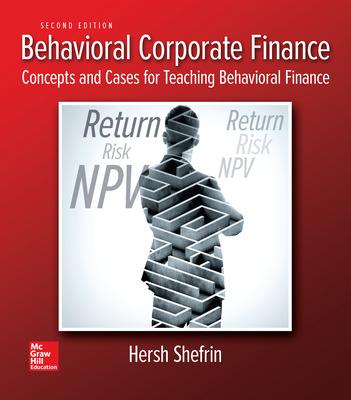A traditional counterargument to the behavioral position described in the chapter is that the chapter arguments only
Question:
A traditional counterargument to the behavioral position described in the chapter is that the chapter arguments only focus on problematic acquisitions. For example, con- sider consumer products firm Colgate-Palmolive. In 1984 Reuben Mark became CEO of Colgate-Palmolive, taking over from Keith Crane. Like Wayne Huizenga, articles appeared in The Wall Street Journal over the years describing Mark as optimistic or confident. Unlike Wayne Huizenga, no such attribution appears to have been made to Keith Crane, at least in the financial press. Moreover, according to the longholder criterion, Reuben Mark is excessively optimistic and overconfident, but Keith Crane was not. During 11 years at the helm of Colgate-Palmolive, Reuben Mark conducted several acquisitions, of which two were large. Mark also divested businesses where Colgate-Palmolive was not a leader. In contrast, Keith Crane did not conduct a single acquisition. Both Huizenga and Mark conducted acquisitions uniformly throughout their tenures. Neither concentrated acquisition activity in the final years of his op- tion’s duration. For example, Mark held an option that expired in 1992. Indeed, be- tween 1990 and 1992 he conducted two acquisitions. However, between 1985 and 1988 he conducted three acquisitions. Colgate-Palmolive appears to have thrived under Mark’s leadership. The March-April 2003 issue of the publication Financial Executive reports that Colgate-Palmolive’s five-year return on equity (ROE) was 71.9 percent, much higher than the industry ROE of 46.5 percent and 12.2 percent for the S&P 500. Does the experience of Colgate-Palmolive not present evidence that contradicts the behavioral position?
Step by Step Answer:

Behavioral Corporate Finance Concepts And Cases For Teaching Behavioral Finance
ISBN: 9781259277207
2nd Edition
Authors: Hersh Shefrin





